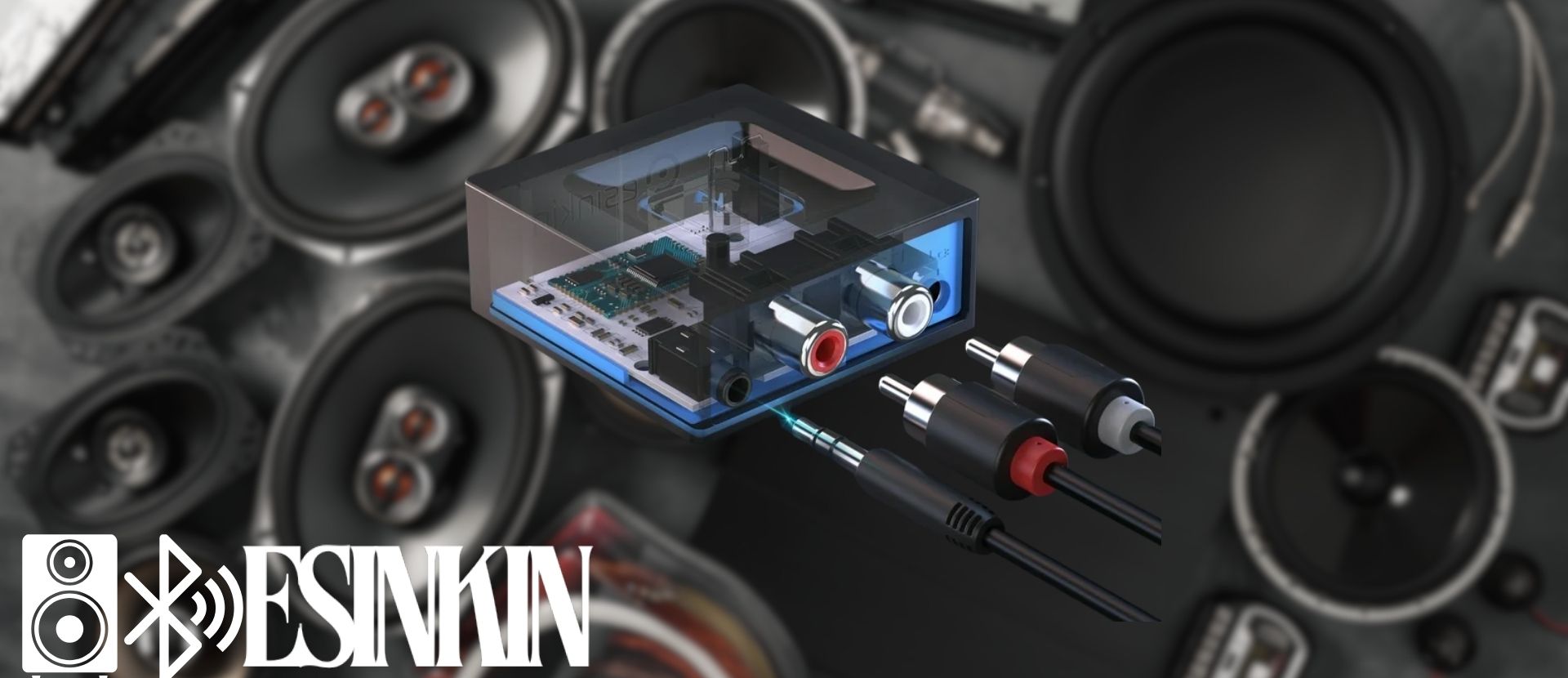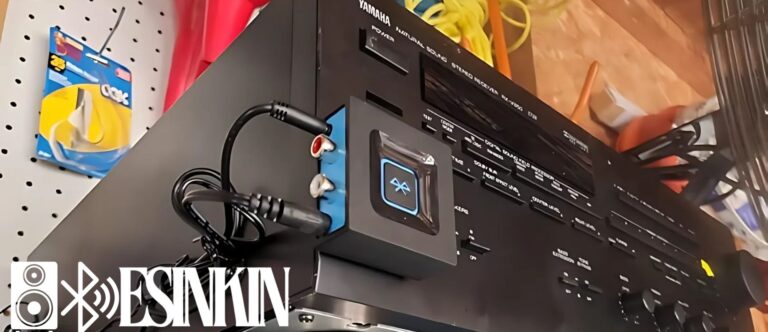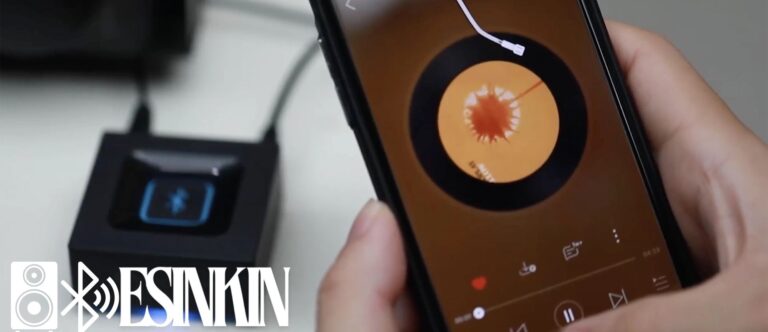Bluetooth technology has revolutionized wireless communication, enabling seamless connectivity across various devices. From home audio setups to in-car entertainment and professional sound systems, Bluetooth transmitters and receivers play a crucial role in enhancing audio experiences. While transmitters send audio signals from non-Bluetooth devices to Bluetooth-enabled ones, receivers enable wired devices to receive Bluetooth signals. Understanding their functionalities helps users make informed choices for their specific needs.
Bluetooth Technology: Explanation
Bluetooth technology was first introduced in 1999 as a short-range wireless communication standard. Over the years, advancements in Bluetooth protocols have led to improved connectivity, better sound quality, and lower latency.
Key Bluetooth Profiles for Audio:
- A2DP (Advanced Audio Distribution Profile) – Enables high-quality audio streaming.
- AVRCP (Audio/Video Remote Control Profile) – Allows remote control functions such as volume and track navigation.
- aptX and aptX HD – Enhance audio quality and reduce latency for better synchronization between audio and video.
Differences Between Bluetooth Transmitters and Receivers:
- Bluetooth Transmitter: Sends audio signals to Bluetooth-enabled devices.
- Bluetooth Receiver: Receives Bluetooth signals and outputs audio to wired devices.
What Is a Bluetooth Transmitter?
A Bluetooth transmitter is a device that converts wired audio signals into wireless ones, allowing non-Bluetooth devices to send audio to Bluetooth-enabled headphones, speakers, or other devices.
How It Works:
- Connects to a non-Bluetooth device (TV, gaming console, or computer) via an audio output (AUX, RCA, optical, etc.).
- Transmits audio signals wirelessly to paired Bluetooth headphones or speakers.
Common Applications:
- Connecting TVs to wireless headphones for private listening.
- Enabling Bluetooth on gaming consoles to use Bluetooth headsets.
- Transmitting audio from a PC to Bluetooth speakers.
What Is a Bluetooth Receiver?
A Bluetooth receiver allows non-Bluetooth audio devices to receive Bluetooth signals and output sound through wired speakers or headphones.
How It Works:
- Pairs with a Bluetooth-enabled device (smartphone, tablet, or laptop) and receives audio signals.
- Converts the Bluetooth audio signal into an analog or digital output for wired audio systems.
Common Applications:
- Making wired home stereo systems wireless.
- Adding Bluetooth to car audio systems for hands-free calls and music streaming.
- Upgrading older audio devices with Bluetooth capabilities.
Differences Between a Bluetooth Transmitter and Receiver
| Feature | Bluetooth Transmitter | Bluetooth Receiver |
| Function | Sends audio signals | Receives audio signals |
| Use Case | Connects non-Bluetooth devices to Bluetooth accessories | Enables wired devices to receive Bluetooth audio |
| Example | TV to Bluetooth headphones | Smartphone to wired speakers |
| Compatibility | Works with TVs, computers, gaming consoles | Works with home stereos, car audio systems |
What Is a 2-in-1 Bluetooth Transmitter and Receiver?
A 2-in-1 Bluetooth adapter can function as both a transmitter and a receiver, making it a versatile solution for various connectivity needs.
Key Benefits:
- Dual functionality: Can switch between transmitting and receiving modes.
- Cost-effective: Eliminates the need for separate transmitter and receiver devices.
- Space-saving: Ideal for users who need both functions without extra clutter.
Key Features to Look for in a Bluetooth Transmitter and Receiver
When choosing a Bluetooth audio device, consider the following features:
- Bluetooth Version: Opt for Bluetooth 5.0 or later for better range and stability.
- Audio Codec Support: Ensure support for SBC, AAC, aptX, aptX HD, and LDAC for optimal sound quality.
- Low Latency: aptX Low Latency reduces audio delay, essential for TV and gaming.
- Range: Look for a device with a longer transmission range (at least 10 meters/33 feet).
- Power Source: Choose between battery-powered or plug-in models based on usage needs.
How to Choose the Right Bluetooth Transmitter or Receiver
Selecting the best Bluetooth transmitter or receiver depends on the intended application:
- For TV audio: Look for low-latency transmitters.
- For home stereo systems: A receiver with aptX HD support enhances sound quality.
- For cars: A Bluetooth receiver with hands-free calling functionality is ideal.
- For multi-purpose use: Consider a 2-in-1 Bluetooth adapter.
Why Choose Esinkin?
Esinkin Bluetooth transmitters and receivers offer reliable connectivity, high-quality audio performance, and easy setup, making them a trusted choice for seamless wireless audio experiences.
How to Set Up a Bluetooth Transmitter and Receiver
Setting Up a Bluetooth Transmitter:
- Connect the transmitter to a non-Bluetooth audio source (TV, gaming console, or PC) using AUX, RCA, or optical cable.
- Turn on the transmitter and set it to pairing mode.
- Pair with a Bluetooth audio device (headphones or speaker).
- Confirm successful connection and test audio output.
Setting Up a Bluetooth Receiver:
- Connect the receiver to a wired speaker, stereo system, or car audio via AUX or RCA.
- Enable pairing mode on the receiver.
- Pair it with a Bluetooth-enabled device (smartphone, tablet, or laptop).
- Test the connection and adjust settings if necessary.
Troubleshooting Common Issues:
- Audio delay: Ensure aptX Low Latency support.
- Pairing failure: Reset devices and try pairing again.
- Connection drops: Keep devices within range and avoid interference.
Frequently Asked Questions
Can a device be both a Bluetooth transmitter and receiver?
Yes, a 2-in-1 Bluetooth adapter can switch between transmitting and receiving modes.
Does a Bluetooth transmitter affect sound quality?
Higher-quality transmitters with aptX HD or LDAC support ensure minimal quality loss.
How far can a Bluetooth transmitter/receiver work?
Most devices have a range of 33-100 feet, depending on obstacles and Bluetooth version.
What devices are compatible with Bluetooth transmitters and receivers?
They work with TVs, gaming consoles, computers, home stereos, car audio systems, and older wired speakers.
Endnotes
Bluetooth transmitters and receivers have significantly improved how we experience wireless audio, making it easier to connect and enjoy music, movies, and games without the limitations of cables. Whether upgrading a home entertainment system, enhancing car audio, or adding Bluetooth to legacy devices, these solutions offer convenience, flexibility, and superior sound quality.
Explore Esinkin’s Bluetooth solutions for high-performance wireless audio connectivity today!


